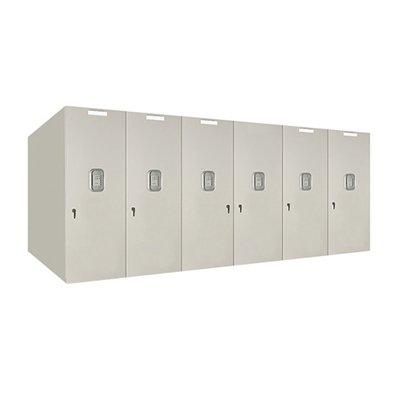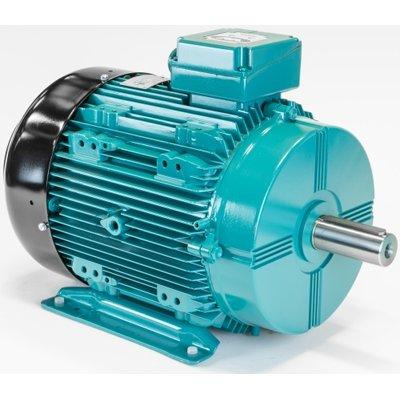Automated operation is a key function for expanding rail capacity and strengthening the performance of railways. Working together with S-Bahn Berlin, Siemens Mobility has installed and will be testing an obstacle detection system – a key technology component for enabling fully automated driving – for the first time during regular daily operation.
The project’s goal is to thoroughly evaluate the performance of the new obstacle detection system during daily operation in various weather and route conditions. The test data will be used to further refine the system and optimize the positioning of the detection sensors.
Siemens’ new obstacle detection system
In the future, the obstacle detection system can help drivers avoid accidents
The system will record background data for the duration of the project, and neither the train drivers nor the passengers will notice its operation. In the future, the obstacle detection system can help drivers avoid accidents, which will stabilize daily S-Bahn operations and increase punctuality. The system promises to be a key technology for enabling digitalized, fully automated rail operations in the future.
Albrecht Neumann, CEO Rolling Stock at Siemens Mobility, said: “Intelligent trains that relieve their drivers of routine tasks and support them in their work are the future of digitalized rail transport. These trains will be able to automatically set themselves up and shut down, ensure energy-optimized operation, react quickly and safely to obstacles on the track, and shunt fully automatically on the depot grounds.”
Albrecht Neumann adds, “We look forward to working with our partners to qualify our innovative obstacle detection technology for practical application in Germany’s largest S-Bahn network.”
Berlin S-Bahn
Peter Buchner, CEO S-Bahn Berlin GmbH, said: “For 100 years, the Berlin S-Bahn has stood for innovation and progress. We are partnering with industry to test new technologies that support environmentally friendly rail transportation. Automatic obstacle detection will be an indispensable component for automated driving in the future. It is already capable of supporting our drivers and contributing to better operational quality.”
Martin Fuchs, CEO Verkehrsverbund Berlin Brandenburg (VBB), said: “The states of Berlin and Brandenburg and the Berlin-Brandenburg public transport authority (VBB) support innovation and the groundwork needed to make S-Bahn operations more efficient and effective.”
Automatic obstacle detection project
Martin Fuchs adds, “This automatic obstacle detection project will generate valuable findings and enable us to further develop the S-Bahn system. Exactly 100 years after the S-Bahn was first electrified, we are preparing yet another technological leap that will make Berlin’s S-Bahn system fit for the future.”
Testing of the technology will be carried out in a partnership between Siemens Mobility GmbH (installation supervision, sensors, hardware, software and digital map), S-Bahn Berlin GmbH (trains, installation, operation), and Digitale Schiene Deutschland/DB InfraGo (digital mapping, open data platform). Results of the tests will be evaluated together with the VBB.
Sensors used include high-performance LiDARs
On the technical side, the sensors used in the project will include high-performance LiDARs
On the technical side, the sensors used in the project will include high-performance LiDARs for close- and long-range object detection and an infrared camera.
The algorithms for evaluating the sensor data have been specially developed for the rail sector in the ‘Berlin Digital Rail Operations – BerDiBa’ research project by Siemens in Berlin-Adlershof and have already been optimized several times.
The system continually compares the position of a train with the location of detected objects using a digital map. Decisions whether to warn the driver or brake the train are made on the basis of these ongoing calculations. A newly developed map from DB InfraGo, which depicts reality with centimeter-accurate precision in 3D, is being used for this purpose for the first time.
Digital Rail Germany initiative
As part of the Digital Rail Germany initiative, Siemens, a technology major in the field of rail automation, and Deutsche Bahn are pursuing a new approach to accelerate the introduction of this detection technology in the rail sector and promote innovation in Germany.
In the project, selected data showing obstacles on the track will be made available centrally in anonymized form and can be used for research purposes, such as training AI models or for system validation.
Emergency braking assistance system
Following a one-year test phase through all seasons, the assistance system should be ready for use
Following a one-year test phase through all seasons, the assistance system should be ready for use as an emergency braking assistance system that operates in the background to support the driver.
On the basis of the data generated during this phase, it will be possible to use the system together with other automation components for automated driving at low speeds, such as during depot shunting or when deploying or shutting down a train.
The field test aims to:
- Gain knowledge about boundary conditions for obstacle detection with the help of joint data evaluation,
- Record and evaluate the performance of the sensor technology under special operating conditions such as rain, fog, snow, and dirt,
- Minimize risks related to planning projects (technology, calculations, deadlines), and
- Optimize system settings to avoid false alarms, essential for driverless operation.
Cooperation partners
The cooperation partners - Siemens Mobility, Deutsche Bahn AG (S-Bahn Berlin GmbH, DB InfraGo, DB Systemtechnik) and the states of Berlin and Brandenburg with the Berlin/Brandenburg Transport Association will jointly analyze the findings and data from the project in the research project.
Installation of a set of prototype sensors for detecting obstacles has already been completed in an S-Bahn Berlin train. As part of the field test, up to ten trains in the Berlin S-Bahn fleet will be equipped with the sensors. Once the field test has been completed, it is planned to remove the sensors.














